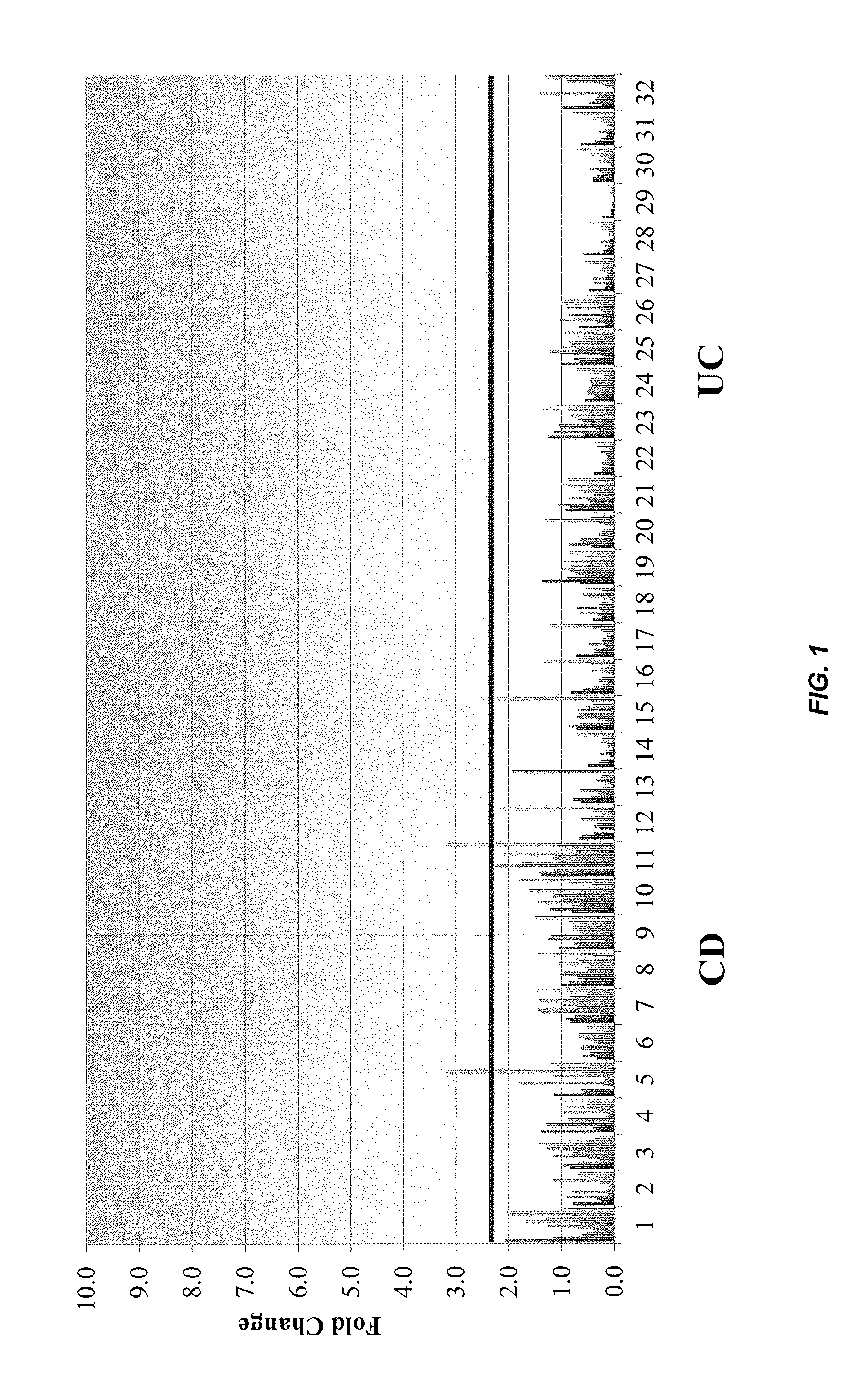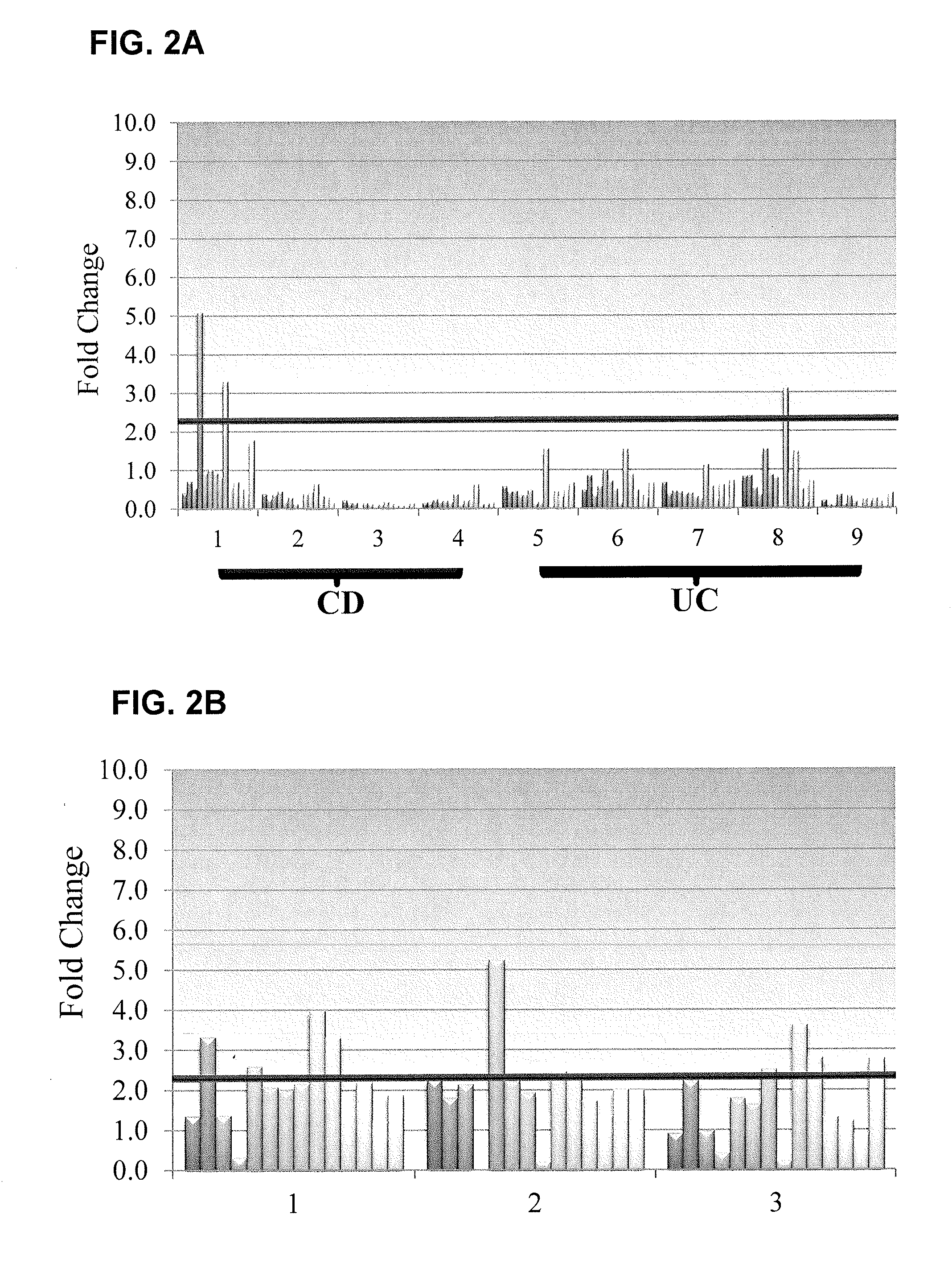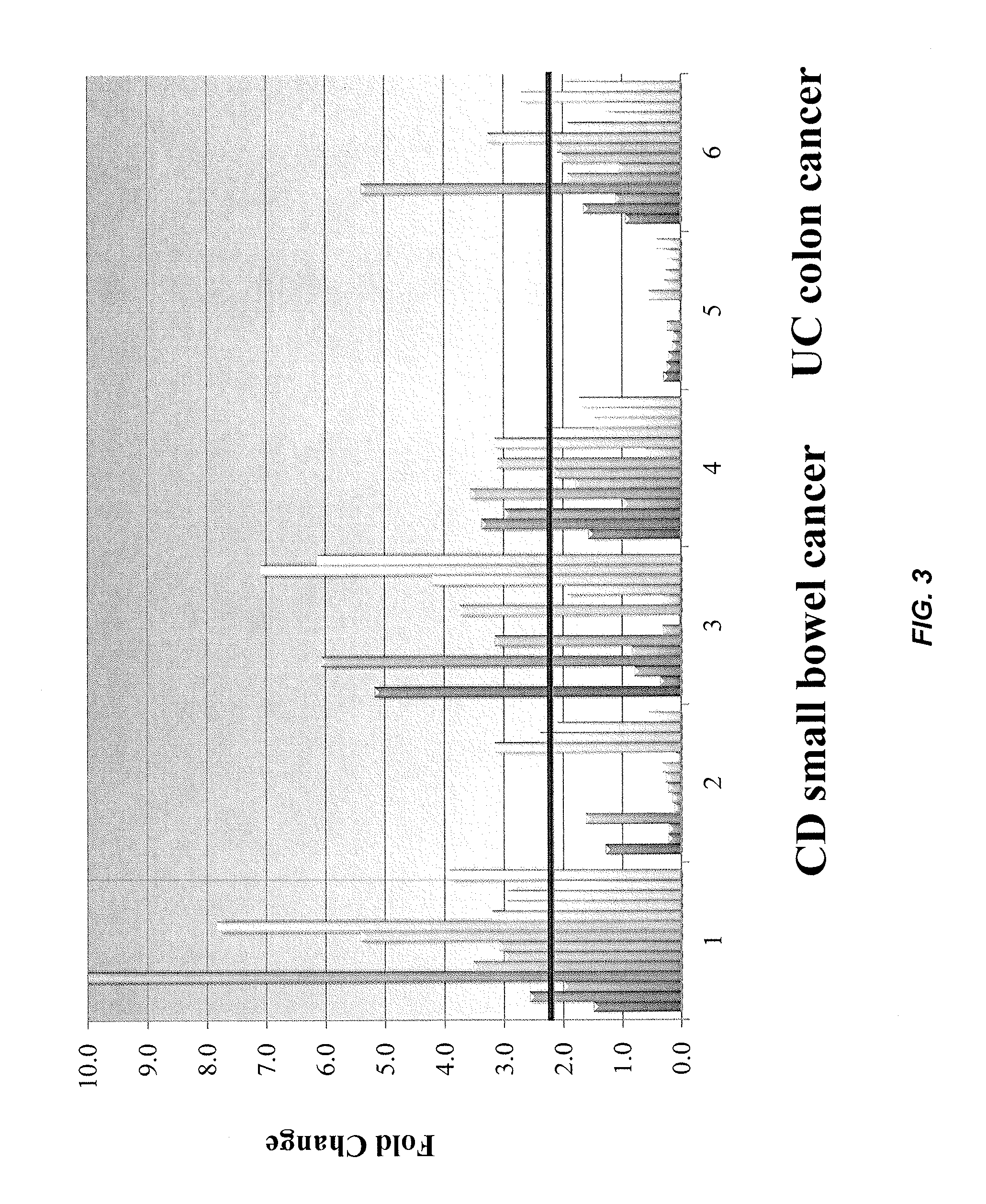Methods for identifying inflammatory bowel disease patients with dysplasia or cancer
a technology for inflammatory bowel disease and which is applied in the field of methods for identifying inflammatory bowel disease patients with dysplasia or cancer, can solve the problem of invasive colonoscopy procedure, and achieve the effect of monitoring the efficacy of treatmen
- Summary
- Abstract
- Description
- Claims
- Application Information
AI Technical Summary
Benefits of technology
Problems solved by technology
Method used
Image
Examples
example 1
Clinical Study Protocol for Identifying Blood microRNA Expression Patterns in Inflammatory Bowel Disease (IBD) Patients with Dysplasia or Cancer
[0163]This example describes a pilot study in which microRNA profiles in serum obtained prior to colonoscopy or surgery are correlated with the presence or absence of colorectal neoplasia determined histologically. All subjects have a blood test prior to colonoscopy or surgery. IBD patients undergoing every 1-2 year surveillance colonoscopies are eligible for repeat blood draws on an every 1-2 year basis up to 3 years.
[0164]Patients with inflammatory bowel disease (IBD) have an increased risk of developing colorectal neoplasia including dysplasia and colorectal cancer (CRC). The standard of care in 2010 is to perform surveillance colonoscopies every 1-2 years with biopsies in patients with longstanding and extensive IBD to identify dysplasia prior to the development of cancer. However, colonoscopy is an invasive procedure and some individual...
example 2
Blood microRNA (miRNA) Expression Patterns can Identify Inflammatory Bowel Disease (IBD) Patients with Dysplasia or Cancer
[0173]This example describes one embodiment of a method for identifying microRNA expression patterns in inflammatory bowel disease (IBD) patients with dysplasia or cancer. Patients with long-standing and extensive IBD have an increased risk of developing dysplasia (D) or cancer (C). MicroRNAs (miRNAs) are a class of small non-coding RNA involved in post-transcriptional regulation of gene expression and have been demonstrated to play important roles in cell proliferation, apoptosis and differentiation. miRNAs have been found to be differently expressed in normal and tumor tissues. This example describes a study that categorizes serum miRNA profiles in IBD patients with dysplasia or cancer.
[0174]IBD patients (2 with IBD / D, 2 with IBD / C, 6 IBD controls without D / C) and 2 non-IBD sporadic C patients were identified at the Boston Medical Center IBD Center. miRNA were ...
example 3
Blood microRNA Expression Patterns can Identify Inflammatory Bowel Disease Patients with Dysplasia or Cancer
[0177]This example describes another embodiment of a method for identifying microRNA expression patterns in inflammatory bowel disease (IBD) patients with dysplasia or cancer.
Background
[0178]Patients with long standing and extensive IBD have an increased risk of developing dysplasia and cancer. Colonoscopic surveillance entails the risks and inconvenience of colonoscopy and needs to be repeated regularly. Interval cancers can develop despite appropriate surveillance protocols. Non-colonoscopic methods for surveillance are needed.
[0179]MicroRNAs (miRNAs) are a class of small non-coding RNAs involved in post-transcriptional regulation of gene expression that play important roles in cell proliferation, apoptosis and differentiation. More than 50% of human miRNA genes are located at sites involved in cancer, suggesting a role in tumorigenesis. miRNAs have been found to be differen...
PUM
| Property | Measurement | Unit |
|---|---|---|
| temperature | aaaaa | aaaaa |
| temperature | aaaaa | aaaaa |
| pH | aaaaa | aaaaa |
Abstract
Description
Claims
Application Information
 Login to View More
Login to View More - R&D
- Intellectual Property
- Life Sciences
- Materials
- Tech Scout
- Unparalleled Data Quality
- Higher Quality Content
- 60% Fewer Hallucinations
Browse by: Latest US Patents, China's latest patents, Technical Efficacy Thesaurus, Application Domain, Technology Topic, Popular Technical Reports.
© 2025 PatSnap. All rights reserved.Legal|Privacy policy|Modern Slavery Act Transparency Statement|Sitemap|About US| Contact US: help@patsnap.com



